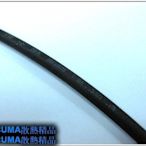熱縮套管 相關
廣告在產品供貨能力、服務速度、負責任態度等皆享有業界領導地位。立即索取報價或線上購買! 熱縮管、袋、熱風槍等現貨。 立即線上訂購!
專業自主研發&先進開模生產設備,隨時升級新技術,滿足全方位產品解決方案,立即查看線上型錄! 高級軟質PVC製成,適用於各種配電盤,貼心分色處理,複雜線路一目了然,立即了解!
耐熱耐寒、耐候性佳、絕緣抗老化,止漏氣密功能佳,專業客製化環保材質矽膠製品。
提供配線器材、大小五金、通訊網路材料,專業團隊服務、嚴格品質要求、快速配送、以達客戶需求! 提供電話配線槽、絕緣配線槽、鋁軌、檔片、配線槽蓋、結束帶、子母扣等產品,規格齊全,速電洽!
搜尋結果
 $25台灣現貨 【老店新開_歡迎面交】DIY 熱縮套管 Φ12 透明的 共100公分25元 耐壓600V 125˚C音響器材
$25台灣現貨 【老店新開_歡迎面交】DIY 熱縮套管 Φ12 透明的 共100公分25元 耐壓600V 125˚C音響器材 $50晶站 熱縮套管 扁形 絕緣管 包覆電線 接線幫手 燈條 DIY工具 圓直徑 22mm 扁22號 一米《晶站》LED 汽機車批發精品
$50晶站 熱縮套管 扁形 絕緣管 包覆電線 接線幫手 燈條 DIY工具 圓直徑 22mm 扁22號 一米《晶站》LED 汽機車批發精品 $10接燈條好幫手【W-529-06】熱縮套管3.5mm-100cm/條(黑色) 阻燃、防水、絕緣 DIY 電料 快速接頭阿囉哈LED總匯DIY材料批發
$10接燈條好幫手【W-529-06】熱縮套管3.5mm-100cm/條(黑色) 阻燃、防水、絕緣 DIY 電料 快速接頭阿囉哈LED總匯DIY材料批發 $30DIY 熱縮套管 Φ8(紅黑);Φ12(透明);Φ13(紅黑);Φ18(藍色) 每米30元起 耐壓600V 125˚C音響設備
$30DIY 熱縮套管 Φ8(紅黑);Φ12(透明);Φ13(紅黑);Φ18(藍色) 每米30元起 耐壓600V 125˚C音響設備![(整捲) 熱縮套管 1mm ~ 80 mm 黑色 熱縮管 (整捲) 熱縮套管 1mm ~ 80 mm 黑色 熱縮管]() $350(整捲) 熱縮套管 1mm ~ 80 mm 黑色 熱縮管輕巧零件庫
$350(整捲) 熱縮套管 1mm ~ 80 mm 黑色 熱縮管輕巧零件庫![光華CUMA散熱精品*KA-2.5O-UL 內徑3 X 2000mm 熱縮套管~現貨 光華CUMA散熱精品*KA-2.5O-UL 內徑3 X 2000mm 熱縮套管~現貨]() $40光華CUMA散熱精品*KA-2.5O-UL 內徑3 X 2000mm 熱縮套管~現貨光華CUMA散熱精品
$40光華CUMA散熱精品*KA-2.5O-UL 內徑3 X 2000mm 熱縮套管~現貨光華CUMA散熱精品![熱縮套管 絕緣 5mm / 2.5mm 熱縮管 1公尺10元 100公分 熱縮套管 絕緣 5mm / 2.5mm 熱縮管 1公尺10元 100公分]() $10熱縮套管 絕緣 5mm / 2.5mm 熱縮管 1公尺10元 100公分Y6336970876
$10熱縮套管 絕緣 5mm / 2.5mm 熱縮管 1公尺10元 100公分Y6336970876![光華CUMA散熱精品*KA-1.5O-UL 內徑1.5 X 2000mm 熱縮套管~現貨 光華CUMA散熱精品*KA-1.5O-UL 內徑1.5 X 2000mm 熱縮套管~現貨]() $35光華CUMA散熱精品*KA-1.5O-UL 內徑1.5 X 2000mm 熱縮套管~現貨光華CUMA散熱精品
$35光華CUMA散熱精品*KA-1.5O-UL 內徑1.5 X 2000mm 熱縮套管~現貨光華CUMA散熱精品![接電線好幫手【W-529-08】熱縮套管5 mm-100cm/條(黑色) 阻燃、防水、絕緣 DIY 電料 收縮膜 接電線好幫手【W-529-08】熱縮套管5 mm-100cm/條(黑色) 阻燃、防水、絕緣 DIY 電料 收縮膜]() $12接電線好幫手【W-529-08】熱縮套管5 mm-100cm/條(黑色) 阻燃、防水、絕緣 DIY 電料 收縮膜阿囉哈LED總匯DIY材料批發
$12接電線好幫手【W-529-08】熱縮套管5 mm-100cm/條(黑色) 阻燃、防水、絕緣 DIY 電料 收縮膜阿囉哈LED總匯DIY材料批發![【W85】30mmx72mm《單片 》18650熱縮膜 電池皮 鋰電池 PVC熱縮套管 另有客製長度【BA-1156@】 【W85】30mmx72mm《單片 》18650熱縮膜 電池皮 鋰電池 PVC熱縮套管 另有客製長度【BA-1156@】]() $1【W85】30mmx72mm《單片 》18650熱縮膜 電池皮 鋰電池 PVC熱縮套管 另有客製長度【BA-1156@】W85團購宅配網
$1【W85】30mmx72mm《單片 》18650熱縮膜 電池皮 鋰電池 PVC熱縮套管 另有客製長度【BA-1156@】W85團購宅配網![熱縮套管哪裡買【W-529-11】熱縮套管8 mm-100cm/條(黑色) 阻燃、防水、絕緣 DIY 固定電線 收縮膜 熱縮套管哪裡買【W-529-11】熱縮套管8 mm-100cm/條(黑色) 阻燃、防水、絕緣 DIY 固定電線 收縮膜]() $15熱縮套管哪裡買【W-529-11】熱縮套管8 mm-100cm/條(黑色) 阻燃、防水、絕緣 DIY 固定電線 收縮膜阿囉哈LED總匯DIY材料批發
$15熱縮套管哪裡買【W-529-11】熱縮套管8 mm-100cm/條(黑色) 阻燃、防水、絕緣 DIY 固定電線 收縮膜阿囉哈LED總匯DIY材料批發![熱縮套管哪裡買【W-529-05】熱縮套管3.0mm-100cm/條(黑色) 阻燃、防水、絕緣 DIY 電料 快速接頭 熱縮套管哪裡買【W-529-05】熱縮套管3.0mm-100cm/條(黑色) 阻燃、防水、絕緣 DIY 電料 快速接頭]() $9熱縮套管哪裡買【W-529-05】熱縮套管3.0mm-100cm/條(黑色) 阻燃、防水、絕緣 DIY 電料 快速接頭阿囉哈LED總匯DIY材料批發
$9熱縮套管哪裡買【W-529-05】熱縮套管3.0mm-100cm/條(黑色) 阻燃、防水、絕緣 DIY 電料 快速接頭阿囉哈LED總匯DIY材料批發
To a first approximation, the change in length measurements of an object due to thermal expansion is related to temperature change by a coefficient of linear thermal expansion (CLTE). It is the fractional change in length per degree of temperature change.
The cinnamon quail-thrush (Cinclosoma cinnamomeum) is a species of bird in the family Cinclosomatidae. Endemic to Australia, it is typically found in arid and semi-arid regions of the central part of the continent, spanning southwest Queensland, northwest New South Wales, northeastern South Australia, and the southeast of the Northern Territory.
Wikipedia [c] is a free content online encyclopedia written and maintained by a community of volunteers, known as Wikipedians, through open collaboration and the wiki software MediaWiki.Wikipedia is the largest and most-read reference work in history, [3] [4] and is consistently ranked among the ten most visited websites; as of August 2024, it was ranked fourth by Semrush, [5] and seventh by ...
- Etymology
- Signs and Symptoms
- Cause
- Mechanism
- Diagnosis
- Prevention
- Treatment
- Prognosis
- Animals
- History
The English name comes from anthrax (ἄνθραξ), the Greek word for coal, possibly having Egyptian etymology, because of the characteristic black skin lesions people with a cutaneous anthrax infection develop. The central black eschar surrounded by vivid red skin has long been recognised as typical of the disease. The first recorded use of the word "a...
Skin
Cutaneous anthrax, also known as hide-porter's disease, is when anthrax occurs on the skin. It is the most common (>90% of cases) and least dangerous form (low mortality with treatment, 23.7% mortality without). Cutaneous anthrax presents as a boil-like skin lesion that eventually forms an ulcer with a black center (eschar). The black eschar often shows up as a large, painless, necrotic ulcer (beginning as an irritating and itchy skin lesion or blister that is dark and usually concentrated as...
Injection
In December 2009, an outbreak of anthrax occurred among injecting heroin users in the Glasgow and Stirling areas of Scotland, resulting in 14 deaths. It was the first documented non-occupational human anthrax outbreak in the UK since 1960. The source of the anthrax is believed to have been dilution of the heroin with bone meal in Afghanistan. Injected anthrax may have symptoms similar to cutaneous anthrax, with the exception of black areas, and may also cause infection deep into the muscle an...
Lungs
Inhalation anthrax usually develops within a week after exposure, but may take up to 2 months. During the first few days of illness, most people have fever, chills, and fatigue. These symptoms may be accompanied by cough, shortness of breath, chest pain, and nausea or vomiting, making inhalation anthrax difficult to distinguish from influenza and community-acquired pneumonia.This is often described as the prodromal period. Over the next day or so, shortness of breath, cough, and chest pain be...
Bacteria
Bacillus anthracis is a rod-shaped, Gram-positive, facultative anaerobe bacterium about 1 by 9 μm in size. It was shown to cause disease by Robert Koch in 1876 when he took a blood sample from an infected cow, isolated the bacteria, and put them into a mouse.The bacterium normally rests in spore form in the soil, and can survive for decades in this state. Herbivores are often infected while grazing, especially when eating rough, irritant, or spiky vegetation; the vegetation has been hypothesi...
Exposure and transmission
Anthrax can enter the human body through the intestines (gastrointestinal), lungs (pulmonary), or skin (cutaneous), and causes distinct clinical symptoms based on its site of entry. Anthrax does not usually spread from an infected human to an uninfected human. If the disease is fatal to the person's body, its mass of anthrax bacilli becomes a potential source of infection to others and special precautions should be used to prevent further contamination. Pulmonary anthrax, if left untreated, i...
The lethality of the anthrax disease is due to the bacterium's two principal virulence factors: the poly-D-glutamic acid capsule, which protects the bacterium from phagocytosis by host neutrophils; and the tripartite protein toxin, called anthrax toxin, consisting of protective antigen (PA), edema factor (EF), and lethal factor (LF). PA plus LF pro...
Various techniques may be used for the direct identification of B. anthracis in clinical material. Firstly, specimens may be Gram stained. Bacillus spp. are quite large in size (3 to 4 μm long), they may grow in long chains, and they stain Gram-positive. To confirm the organism is B. anthracis, rapid diagnostic techniques such as polymerase chain r...
Precautions are taken to avoid contact with the skin and any fluids exuded through natural body openings of a deceased body that is suspected of harboring anthrax.The body should be put in strict quarantine. A blood sample is collected and sealed in a container and analyzed in an approved laboratory to ascertain if anthrax is the cause of death. Th...
Anthrax cannot be spread from person to person, except in the rare case of skin exudates from cutaneous anthrax. However, a person's clothing and body may be contaminated with anthrax spores. Effective decontamination of people can be accomplished by a thorough wash-down with antimicrobial soap and water. Wastewater is treated with bleach or anothe...
Cutaneous anthrax is rarely fatal if treated, because the infection area is limited to the skin, preventing the lethal factor, edema factor, and protective antigen from entering and destroying a vital organ. Without treatment, up to 20% of cutaneous skin infection cases progress to toxemiaand death. Before 2001, fatality rates for inhalation anthra...
Anthrax, a bacterial disease caused by Bacillus anthracis, can have devastating effects on animals. It primarily affects herbivores such as cattle, sheep, and goats, but a wide range of mammals, birds, and even humans can also be susceptible. Infection typically occurs through the ingestion of spores in contaminated soil or plants. Once inside the ...
Discovery
Robert Koch, a German physician and scientist, first identified the bacterium that caused the anthrax disease in 1875 in Wollstein (now Wolsztyn, Poland). His pioneering work in the late 19th century was one of the first demonstrations that diseases could be caused by microbes. In a groundbreaking series of experiments, he uncovered the lifecycle and means of transmission of anthrax. His experiments not only helped create an understanding of anthrax but also helped elucidate the role of micro...
First vaccination
Anthrax posed a major economic challenge in France and elsewhere during the 19th century. Horses, cattle, and sheep were particularly vulnerable, and national funds were set aside to investigate the production of a vaccine. French scientist Louis Pasteurwas charged with the production of a vaccine, following his successful work in developing methods that helped to protect the important wine and silk industries. In May 1881, Pasteur – in collaboration with his assistants Jean-Joseph Henri Tous...
Engineered strains
1. The Sterne strain of anthrax, named after the Trieste-born immunologist Max Sterne, is an attenuated strain used as a vaccine, which contains only the anthrax toxinvirulence plasmid and not the polyglutamic acid capsule expressing plasmid. 2. Strain 836, created by the Soviet bioweapons program in the 1980s, was later called by the Los Angeles Times"the most virulent and vicious strain of anthrax known to man". 3. The virulent Ames strain, which was used in the 2001 anthrax attacks in the...
Plasma (from Ancient Greek πλάσμα (plásma) 'moldable substance' [1]) is one of four fundamental states of matter (the other three being solid, liquid, and gas) characterized by the presence of a significant portion of charged particles in any combination of ions or electrons.
Oropouche fever is a tropical viral infection which can infect humans. It is transmitted by biting midges and mosquitoes, from a natural reservoir which includes sloths, non-human primates, and birds. [2] . The disease is named after the region where it was first discovered and isolated in 1955, by the Oropouche River in Trinidad and Tobago. [3] .
Paracetamol is used for the relief of mild to moderate pain such as headache, muscle aches, minor arthritis pain, toothache as well as pain caused by cold, flu, sprains, and dysmenorrhea. [62] . It is recommended, in particular, for acute mild to moderate pain, since the evidence for the treatment of chronic pain is insufficient. [15]
熱縮套管 相關
廣告過去一個月已有 超過 10 萬 位使用者造訪過 uline.com
Make your own shrink bags. PVC tubing is sealed on both sides to speed your packaging. Clear, high-gloss packaging. Available in 100 and 200 gauge tubing.












